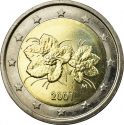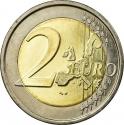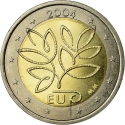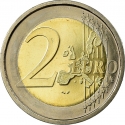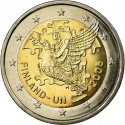You are about to finish your registration. Please check your mailbox (including spam folder). There should be a letter with a confirmation link. Check setting to make sure that your e-mail address is correct.
Send letter againDescription
Gesellius, Lindgren, Saarinen, a Finnish architecture firm, was established in Helsinki in 1896 by architects Herman Gesellius, Armas Lindgren, and Eliel Saarinen. They gained international acclaim for their design of the Finnish pavilion at the 1900 Paris World Expo, showcasing the prevailing Art Nouveau style. From 1901 to 1904, they constructed Hvitträsk, an extensive studio home for themselves and their families in Kirkkonummi by Lake Vitträsk. The company ceased operations in 1905, with the National Museum of Finland being their final project, supervised solely by Lindgren.
Herman Ernst Henrik Gesellius (1874–1916) was a Finnish architect. He graduated from the Polytechnical Institute in 1897 and co-founded the architecture firm Gesellius, Lindgren, Saarinen in 1896 with Armas Lindgren and Eliel Saarinen. Notable among his works is the Wuorio House ("Wuorion talo") in Helsinki, designed by Gesellius from 1908 to 1909, with completion by Lindgren from 1913 to 1914.
Armas Eliel Lindgren (1874–1929) was a Finnish architect, professor, and painter. Born in Hämeenlinna, Lindgren graduated from the Polytechnical Institute of Helsinki in 1897, collaborating with renowned architects Josef Stenbäck and Gustaf Nyström. He co-founded the architectural firm Gesellius, Lindgren, Saarinen in 1896, responsible for projects like the National Museum of Finland. Lindgren began teaching art history at the Polytechnic Institute in 1900 and served as the Arts Director of the Central School of Applied Arts from 1902 to 1912. He established his own office in 1908 and collaborated closely with Wivi Lönn on projects like the Uusi ylioppilastalo and the Estonia Theatre in the 1910s. In 1919, Lindgren became the Professor of Architecture at Helsinki University of Technology, succeeding Gustaf Nyström, and influenced notable Finnish architect Alvar Aalto as a professor.
Gottlieb Eliel Saarinen (1873–1950) was a Finnish-American architect renowned for his early 20th-century art nouveau buildings and as the father of architect Eero Saarinen. Educated at the Helsinki University of Technology, he co-founded the firm Gesellius, Lindgren, Saarinen, notable for the Finnish pavilion at the 1900 Paris World Fair and Helsinki Central railway station. In the US from 1923, Saarinen's design for the Tribune Tower in Chicago influenced skyscraper architecture. He later designed the Cranbrook Educational Community campus and taught at Cranbrook Academy of Art, influencing designers like Ray and Charles Eames. Saarinen's iconic tea urn and architectural designs are exhibited worldwide. He became a professor at the University of Michigan, and his son Eero became a significant architect. Eliel received the AIA Gold Medal in 1947.
Obverse

|
Depicts silhouettes of four buildings, with their spires converging towards the center. Inscriptions like "GESELLIUS," "LINDGREN," and "SAARINEN," along with the Mint of Finland's logo (lion), the country code (FI), and the issue year, are arranged diagonally amidst the buildings. These texts and building silhouettes create a clock-like arrangement within a circular shape. Encircling this composition are the twelve stars representing the European Union. GESELLIUS |
|---|---|
Reverse

|
A geographical map of Western Europe spans the outer ring and inner core on the right side of the coin. The inscription 2 EURO is superimposed over the map of Europe, with the numeral “2” located in an open field representing the eastern Atlantic Ocean. 2 EURO |
| Edge |
The edge reads SUOMI FINLAND (the name of the country in Finnish and Swedish, its two official languages) and contains three lion heads SUOMI FINLAND |
2 Euro
Gesellius, Lindgren, Saarinen – Finnish Architecture
KM#
Gesellius, Lindgren, Saarinen – Finnish Architecture
Characteristics
| Type | Commemorative Issue (Circulating) |
| Material | Bi-Metallic |
| Ring | Cupronickel |
| Center | Nickel Brass |
| Weight | 8.5 g |
| Diameter | 25.75 mm |
| Thickness | 2.2 mm |
| Shape |
|
| Alignment | Medal |
| Mint |
Mint of Finland
|


